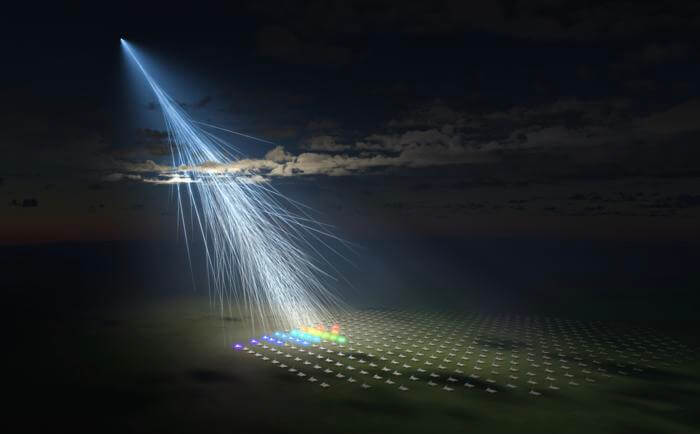Scientists from the Telescope Array experiment made an intriguing discovery: an extraordinarily energetic cosmic ray, exceeding 240 exa-electron volts (EeV) in energy, was detected by the experiment’s surface detector.
But what baffles researchers is that this ray arrives without a clear source direction. These ultrahigh-energy cosmic rays (UHECRs) are subatomic charged particles from space with energies surpassing 1 EeV – about a million times higher than the energy produced by human-made particle accelerators.
The origins of these rare UHECRs are believed to be linked to some of the most powerful events in the Universe, including phenomena involving black holes, gamma-ray bursts, and active galactic nuclei. However, much about the physics and acceleration mechanisms behind these particles remains a mystery due to their infrequent arrivals—estimated to be less than one particle per century per square kilometer. Detecting these highly energetic UHECRs demands instruments with large collecting areas, like the Telescope Array experiment.
This experiment, situated in Utah, USA, covers an effective detection area of 700 square kilometers and detected an unusually high-energy cosmic ray on May 27, 2021, with an estimated energy of about 244 EeV. This remarkably high energy level is comparable to that of the most energetic cosmic ray ever observed, known as the “Oh-My-God” particle, detected in 1991 with an estimated energy of 320 EeV.
The latest detected particle has been named the “Amaterasu” particle, paying homage to the sun goddess in Japanese mythology. Professor Toshihiro Fujii from Osaka Metropolitan University, leading the research, expressed astonishment at the particle’s unprecedented energy level.
Surprisingly, the arrival direction of this cosmic ray doesn’t align with any known cosmic sources. Instead, it points to a void in the vast structure of the Universe—a region sparsely populated by galaxies. This unexpected trajectory challenges existing theories, suggesting the possibility of larger magnetic deflections, unidentified sources in the extragalactic neighborhood, or gaps in our understanding of high-energy particle physics.
The researchers are preparing to publish their findings in Science on November 24, 2023, shedding light on this mysterious cosmic phenomenon. Despite numerous observations by the Telescope Array, questions about the origin and travel of these ultra-high-energy cosmic rays persist. Their trajectory’s deviation from expected paths and the absence of known high-energy sources intensify the mystery surrounding these particles.
Cosmic rays, originating from celestial events, contain charged particles that travel through space, interacting with Earth’s atmosphere, generating secondary particles. Detecting these requires vast surface detectors due to the immense footprint created by these secondary particles. High-energy cosmic rays like the Amaterasu particle, unaffected by galactic and extra-galactic magnetic fields, offer unique insights into the Universe’s extreme events.
As researchers delve deeper, they aim to expand the Telescope Array to cover a broader area, hoping to capture more events and unveil the secrets behind these cosmic phenomena. The larger footprint, nearly the size of Rhode Island, will enhance their ability to scrutinize these rare events and may provide crucial clues to solve this cosmic puzzle.


